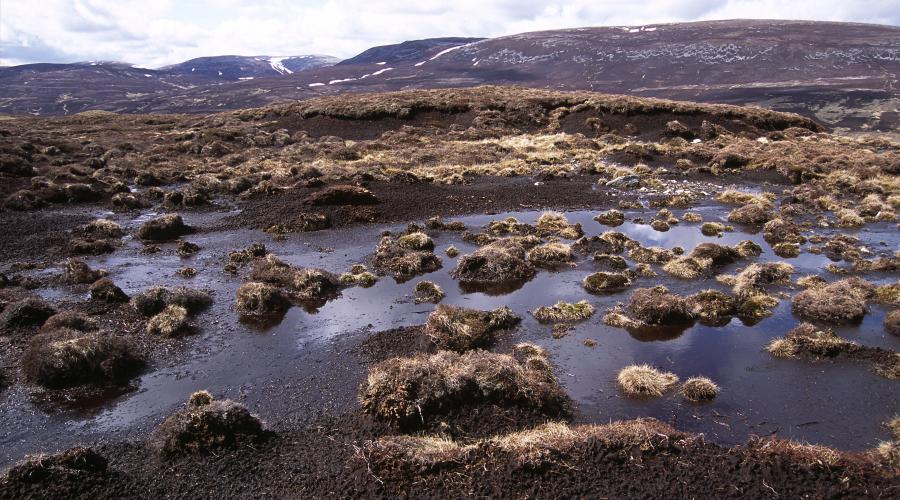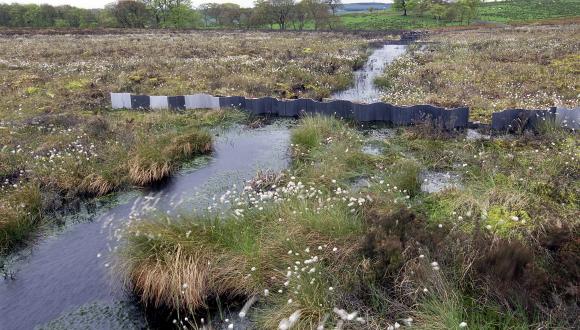
Blanket bog
Found across the Scottish uplands, blanket bog occurs mostly in northern and western areas with gentle slopes and poor drainage.
Blanket bog is a type of peatland found in only a few parts of the world with cool, wet and, usually, oceanic climates.
Under these conditions, bog mosses and other bog plants break down very slowly to gradually form a layer of peat. Peat depth varies from 50cm to 3m on average, but depths of up to 8m aren’t uncommon.
Scotland has so much wet ground as:
- our position at the edge of the Atlantic Ocean means we get a lot of rain
- our rocks, soils and landforms stop rainwater from draining away quickly
Peat develops in these regularly wet conditions and in turn holds more water. This encourages more bog plants, which results in more peat being laid down.
Blanket bog is one of Scotland’s most common semi-natural habitats, covering some 1.8 million hectares – 23% of our land area. Scotland holds a significant amount of the European and world resource of this rare habitat.
Blanket bog dominates our rolling moorlands, especially in the:
- North Highlands
- Western Isles
- Northern Isles
Lowland raised bog is another type of peat bog found in Scotland.
A living landscape
Peatlands are a living landscape. Peat builds up at different rates to form patterns of hummocks and hollows, and lochs and lochans dot our wide expanse of peatlands.
Humble sphagnum mosses drive the process of peat formation.
Our peatlands are also known for:
- upland breeding birds
- interesting plants – like the insect-eating sundews and butterwort
Benefits of peat bogs for people
- Water supply – much of our drinking water comes from peatland areas and peat is a key ingredient used to flavour malt whisky.
- Flood management – intact peat bogs store water and help to maintain steady flow rates on salmon rivers and reduce flood risks downstream.
- Sheep grazing – many peatland areas produce store lambs that are sold on for fattening in the lowlands.
- Recreation – uniquely Scottish experiences on our moorlands include red deer stalking, game bird shooting, wildlife watching and walking.
Find out more
The Peatlands of Caithness and Sutherland: Management Strategy 2005–2015




